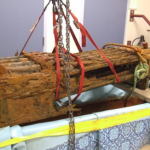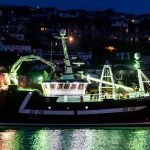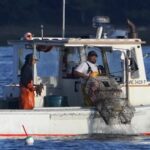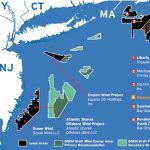Tag Archives: new-england-fishery-management-council

New England scallopers face a tough 2025
New England scallopers are looking at another tough year in 2025, as they prepare for a set of federal regulations to protect both their livelihoods and the Atlantic Ocean’s scallop populations. If approved by NOAA Fisheries, the new rules, called Scallop Framework 39, will reduce the number of times that full-time vessels can go drag in some federally-managed scalloping grounds — called “access areas” — in the 2025 fishing year. But they will allow these vessels more time to scallop in the open ocean. The start of the access-area scalloping season will also be pushed back from April 1 to May 15, 2025. It will end on March 31, 2026. Local scallopers and industry representatives say the contents of Framework 39 are not a surprise. Landings have been shrinking over the past four years. “We’re just tightening the belt, and taking a deep breath, and riding the storm out,” said New Bedford scallop vessel manager and owner Tony Alvernaz. more, >>CLICK TO READ<< 17:50
Fishermen Fight Bureaucrats to Defend Their Way of Life
 Fishermen are going to court in Portland, Maine, on Tuesday to protect their businesses and communities from an unconstitutional regulatory commission that is a menace to our iconic industry. Overregulation has taken the joy out of fishing, and the prosperity too. That inevitably follows when powerful bureaucrats aren’t accountable to anyone, as is the case with the unconstitutional regional management councils that set policy for our fisheries. America’s fishing fleet is steadily retracting. Fishing is a generational trade passed within families. Many fishermen I know are vectoring their sons and daughters away from the family business. There are many reasons for that, but overregulation is one of them. By Jerry Leeman. more, >>CLICK TO READ<< 13:21
Fishermen are going to court in Portland, Maine, on Tuesday to protect their businesses and communities from an unconstitutional regulatory commission that is a menace to our iconic industry. Overregulation has taken the joy out of fishing, and the prosperity too. That inevitably follows when powerful bureaucrats aren’t accountable to anyone, as is the case with the unconstitutional regional management councils that set policy for our fisheries. America’s fishing fleet is steadily retracting. Fishing is a generational trade passed within families. Many fishermen I know are vectoring their sons and daughters away from the family business. There are many reasons for that, but overregulation is one of them. By Jerry Leeman. more, >>CLICK TO READ<< 13:21
Groundfish: Council Signs off on Amendment 25; Prepares for December Final Action on Framework 69 Under Cod Phase 1
 The New England Fishery Management Council took final action on Amendment 25 to the Northeast Multispecies (Groundfish) Fishery Management Plan (FMP) when it met September 24-26, 2024 in Gloucester, Massachusetts. The Council is now focused on Framework Adjustment 69 to the FMP. The framework is being developed to establish measures for the 2025 groundfish fishing year and, for certain stocks, 2026 and 2027 as well. The Council is scheduled to take final action on the framework at its December 3-5, 2024 meeting in Newport, Rhode Island. The 2025 groundfish fishing year begins on May 1. Charts, links, more, >>CLICK TO READ<< 13:32
The New England Fishery Management Council took final action on Amendment 25 to the Northeast Multispecies (Groundfish) Fishery Management Plan (FMP) when it met September 24-26, 2024 in Gloucester, Massachusetts. The Council is now focused on Framework Adjustment 69 to the FMP. The framework is being developed to establish measures for the 2025 groundfish fishing year and, for certain stocks, 2026 and 2027 as well. The Council is scheduled to take final action on the framework at its December 3-5, 2024 meeting in Newport, Rhode Island. The 2025 groundfish fishing year begins on May 1. Charts, links, more, >>CLICK TO READ<< 13:32

Scallopers assail continued closure of Northern Edge
Fisheries regulators voted this month to “discontinue” development of a plan to reopen the Northern Edge of Georges Bank — a lucrative scallop ground that has long been closed to commercial fishing. In April, the New England Fishery Management Council agreed to consider requests to reopen the fishing grounds at the urging of both the scallop industry and Mayor Jon Mitchell. He and industry representatives cited significant headwinds for the region’s top fishery, including a slump in prices and fewer days at sea for fishermen. They added that opening the Northern Edge would benefit the whole port economy and surrounding businesses. But in the midst of a four-day meeting in Freeport, Maine, the Council voted not to continue discussing plans to reopen the area in order to focus on the “long-term productivity of the Georges Bank scallop resource.” For regulators, it’s a balancing act to weigh sustainability and the economic pressures on fishermen to sustain their livelihoods. more, >>CLICK TO READ<< 17:43
Scallop Research Set-Aside Program to Support 14 New Projects; Several 2024 Announcements Include Multi-Year Awards
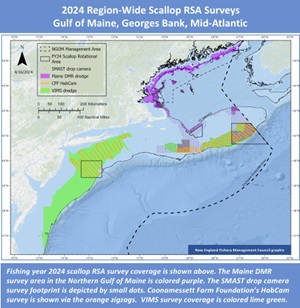 The Atlantic Sea Scallop Research Set-Aside (RSA) Program will support 14 new projects that were selected from the 2024 RSA solicitation. Several awards will support multi-year research, including a four-year regional survey effort. The set-aside harvest is expected to generate $22 million in revenue. Of that total, $5 million will fund the targeted research and $17 million will compensate industry partners who harvest the set-aside scallops. To determine the award amounts, the price of sea scallops was projected to average $14 per pound of meats. Charts, more, >>CLICK TO READ<< 12:38
The Atlantic Sea Scallop Research Set-Aside (RSA) Program will support 14 new projects that were selected from the 2024 RSA solicitation. Several awards will support multi-year research, including a four-year regional survey effort. The set-aside harvest is expected to generate $22 million in revenue. Of that total, $5 million will fund the targeted research and $17 million will compensate industry partners who harvest the set-aside scallops. To determine the award amounts, the price of sea scallops was projected to average $14 per pound of meats. Charts, more, >>CLICK TO READ<< 12:38
Mayor Mitchell advocates for scallopers
 Mayor Jon Mitchell is advocating for the New England Fishery Management Council to open the Northern edge scallop grounds to New Bedford commercial fishermen. In a letter to Chairman of the Board, Eric Reid, Mitchell said that making these areas available would benefit the industry greatly and create a “key new source of scallops.” “While there are multiple species that are harvested by New Bedford fishing vessels, scallops are the prime drivers of economic activity within the Port of New Bedford,” Mitchell wrote. more, >>CLICK TO READ<< 12:54
Mayor Jon Mitchell is advocating for the New England Fishery Management Council to open the Northern edge scallop grounds to New Bedford commercial fishermen. In a letter to Chairman of the Board, Eric Reid, Mitchell said that making these areas available would benefit the industry greatly and create a “key new source of scallops.” “While there are multiple species that are harvested by New Bedford fishing vessels, scallops are the prime drivers of economic activity within the Port of New Bedford,” Mitchell wrote. more, >>CLICK TO READ<< 12:54
Anglers seek trawler buffer zone as Atlantic herring stock declines
 Recreational fishermen in New England say commercial trawlers are threatening the survival of smaller businesses relying on a healthy stock of Atlantic herring. Rich Hittinger, first vice president of the Rhode Island Saltwater Anglers Association, said years of overfishing depleted the population and continue to have negative effects on the ocean ecosystem. “The predator fish, like the striped bass, they’re scrounging for anything that they can eat,” Hittinger observed. “And we often see fish that are long and thin because they’re really not getting sufficient nutrition.” Hittinger noted anglers want the New England Fishery Management Council to reestablish a 12-mile offshore buffer zone to force large commercial trawlers out to sea and reduce conflicts with businesses closer to shore. The council is accepting public comments through April. more, >>click to read<< 06:27
Recreational fishermen in New England say commercial trawlers are threatening the survival of smaller businesses relying on a healthy stock of Atlantic herring. Rich Hittinger, first vice president of the Rhode Island Saltwater Anglers Association, said years of overfishing depleted the population and continue to have negative effects on the ocean ecosystem. “The predator fish, like the striped bass, they’re scrounging for anything that they can eat,” Hittinger observed. “And we often see fish that are long and thin because they’re really not getting sufficient nutrition.” Hittinger noted anglers want the New England Fishery Management Council to reestablish a 12-mile offshore buffer zone to force large commercial trawlers out to sea and reduce conflicts with businesses closer to shore. The council is accepting public comments through April. more, >>click to read<< 06:27
NOAA Fisheries Extends Emergency Measures for Gulf of Maine Haddock Quota through Remainder of Fishing Year 2023
 Effective January 9, 2024 – At the New England Fishery Management Council’s request, NOAA Fisheries took emergency action to increase the Gulf of Maine (GOM) haddock acceptable biological catch (ABC) for the 2023 fishing year. NOAA Fisheries increased the fishing year 2023 ABC to the fishing mortality associated with the maximum sustainable yield (FMSY) (2,515 mt). The emergency measures were included in the final rule for Framework Adjustment 65 (88 FR 56527; August 18, 2023). The emergency measures will expire on February 14, 2024, under the Magnuson-Stevens Act’s initial 180-day limit on the duration of an emergency action. more, links, >>click to read<< 19:40
Effective January 9, 2024 – At the New England Fishery Management Council’s request, NOAA Fisheries took emergency action to increase the Gulf of Maine (GOM) haddock acceptable biological catch (ABC) for the 2023 fishing year. NOAA Fisheries increased the fishing year 2023 ABC to the fishing mortality associated with the maximum sustainable yield (FMSY) (2,515 mt). The emergency measures were included in the final rule for Framework Adjustment 65 (88 FR 56527; August 18, 2023). The emergency measures will expire on February 14, 2024, under the Magnuson-Stevens Act’s initial 180-day limit on the duration of an emergency action. more, links, >>click to read<< 19:40
NEFMC sets groundfish fishery quota for upcoming fishing years
 The New England Fishery Management Council’s final action on specifications meant to guide the groundfish fishery in the coming fishing year offers increased catch limits for Eastern Georges Bank cod and haddock but a decrease for yellowtail flounder. The council selected final measures for Framework Adjustment 66 to the Northeast Multispecies (Groundfish) Fishery Management Plan at its December meeting in Newport, Rhode Island, last week. For commercial fishers, there are slight increases in the so-called sub-annual catch limits for Georges Bank cod and Gulf of Maine cod, and a more significant reduction to the sub-ACL for Georges Bank haddock. more, >>click to read<< 07:28
The New England Fishery Management Council’s final action on specifications meant to guide the groundfish fishery in the coming fishing year offers increased catch limits for Eastern Georges Bank cod and haddock but a decrease for yellowtail flounder. The council selected final measures for Framework Adjustment 66 to the Northeast Multispecies (Groundfish) Fishery Management Plan at its December meeting in Newport, Rhode Island, last week. For commercial fishers, there are slight increases in the so-called sub-annual catch limits for Georges Bank cod and Gulf of Maine cod, and a more significant reduction to the sub-ACL for Georges Bank haddock. more, >>click to read<< 07:28

NE Fishery Management Council welcomes aboard Jackie Odell
The new face on the New England Fishery Management Council is no stranger to a group that advises on policy related to the region’s vital fisheries. That face belongs to Jacqueline “Jackie” Odell, who has been a longtime advocate and thought leader for the fishing industry as the two-decade executive director of the Northeast Seafood Coalition at 1 Blackburn Center. Odell was welcomed aboard the Newburyport-based council as it opened its latest meeting in Plymouth on Monday. She was administered the oath of office by NOAA Fisheries Regional Administrator Mike Pentony along with three members who were reappointed: John Pappalardo of Massachusetts, Daniel Salerno of New Hampshire, and Alan Tracy of Maine. Odell was appointed to her first three-year term to an at-large seat with the term running through Aug. 10, 2026. >>click to read<< 07:57
Herring disaster funds should be used to phase out harmful trawling
 The Atlantic States Marine Fisheries Commission is releasing $11 million in disaster relief funds to Atlantic herring harvesters, of which $7 million will go to Maine. These funds should be used to phase out herring trawling by buying back fishing permits in an effort to increase herring stocks and to protect other marine life. U.S. Atlantic herring landings in the 2000s averaged 206 million pounds annually but have since decreased to below 22 million pounds in 2020 and 2021. The New England Fishery Management Council led a process to craft a 10-year rebuilding plan. This dramatic downturn in herring is likely because variables with climate change are reducing ocean productivity resulting in seven consecutive years of low numbers of young fish surviving to maturity. >click to read< 12:58
The Atlantic States Marine Fisheries Commission is releasing $11 million in disaster relief funds to Atlantic herring harvesters, of which $7 million will go to Maine. These funds should be used to phase out herring trawling by buying back fishing permits in an effort to increase herring stocks and to protect other marine life. U.S. Atlantic herring landings in the 2000s averaged 206 million pounds annually but have since decreased to below 22 million pounds in 2020 and 2021. The New England Fishery Management Council led a process to craft a 10-year rebuilding plan. This dramatic downturn in herring is likely because variables with climate change are reducing ocean productivity resulting in seven consecutive years of low numbers of young fish surviving to maturity. >click to read< 12:58

Haddock quotas for fishermen have been drastically cut. What does that mean for haddock eaters?
There is a haddock problem swimming around Gulf of Maine waters. But don’t blame the problem on fishermen catching too many haddock, say Maine commercial fishing advocates like Ben Martens, executive director of the Maine Coast Fishermen’s Association. In fact, they have been fishing in accordance with mandated quotas for decades, he said, regulatory measures that have returned the haddock stocks in the Gulf of Maine to sustainable levels. The problem, rather, is grounded in inaccurate accounting of the boom-and-bust cycles of haddock biomass, that is, how many fish are swimming in the Gulf of Maine at any given time. In April, the New England Fishery Management Council, a regional body that uses industry and scientific data to recommend quotas that restrict how many metric tons of regulated species Maine fishermen can haul in each year, announced a cut in haddock quotas. It represents an 80 percent reduction in allowable catch; the new season began on May 1. >click to read< 08:50

NEFMC asking NOAA to increase catch limit for haddock in Gulf of Maine to protect fishermen
In a statement issued April 20, the New England Fishery Management Council, which oversees fishing issues for the region, said the catch limit for the season that began May 1 is 1,936 metric tons, an 84 percent drop from last year. But now the council wants to give fishermen a reprieve, citing a rebound in haddock stock and after hearing concerns at the panel’s meeting last month in Mystic, Conn. “Fishermen have been encountering Gulf of Maine haddock at very high catch rates,” the council said, adding that several fishermen voiced concern “that an early shutdown of the fishery was highly likely and would have wide-ranging impacts.” “Even without targeting haddock, fishermen need haddock quota to account for bycatch while harvesting other species,” the council said. >click to read< 09:43

Mega Cut: Haddock, a staple Atlantic fish, is in decline off New England, regulators say
A recent scientific assessment found that the Gulf of Maine haddock stock declined unexpectedly, and that meant the catch quotas for the fish were unsustainably high, federal fishing managers said. “We seem to find plenty, but they can’t,” said Terry Alexander, a Maine-based fisher who targets haddock and other species. “It’s a disaster is what it is. A total, complete disaster.” The fishery management council mandated the 84% reduction in catch quotas for the current fishing year, which started May 1. The change applies to fishers who harvest haddock from the Gulf of Maine, a body of water off Massachusetts, New Hampshire and Maine. Fishers also harvest from Georges Bank, a fishing ground to the east where quotas were also reduced for this year, including adjoining areas overseen by Canadian officials who issued their own major cuts. >click to read< 08:02

Fishermen: Haddock limits to lead to shutdown
In two tows during a fishing trip in March, Gloucester fisherman Joe Orlando caught what could have been almost his entire allocation for Gulf of Maine haddock under catch limits proposed for fishing year 2023, which begins May 1. Orlando harvested 7,000 pounds in those two tows, about a half day’s worth of fishing, Jackie Odell, executive director of the Northeast Seafood Coalition pointed out to members of the New England Fishery Management Council, NOAA Fisheries and others in an email. His allocation for the upcoming fishing year is expected to be 8,000 pounds. >click to read< 07:57

NEFMC Requests Emergency Action for Gulf of Maine Haddock to Prevent Significant Fishery Impacts
The New England Fishery Management Council is asking NOAA Fisheries to take emergency action under the Secretary of Commerce’s authority to address a critical Gulf of Maine haddock situation that is expected to result in significant fishery impacts during the 2023 groundfish fishing year. The crux of the problem is this. Fishermen have been encountering Gulf of Maine haddock at very high catch rates. The proposed 2023 annual catch limit (ACL), however, is extremely low. The Council recently learned of one industry member who, in a single trip, harvested an amount of Gulf of Maine haddock equivalent to what will become his entire allocation for 2023. Several fishermen expressed concern that an early shutdown of the fishery was highly likely and would have wide-ranging impacts. >click to read< 15:43

LEEMAN: Federal Regulators And Climate Alarmists Are Killing America’s Oldest, Most Iconic Industry
American fishermen are the most regulated in the world, and it’s driving experienced captains off the water and young people away from their homes in search of opportunities elsewhere. At 41, I’m one of the younger fishing boat captains in New England. I’m grateful Senator Susan Collins, R-Maine, met with me last week to discuss helping fishermen get a seat at the table with regulators. We who work the water, the same waters our families worked for generations, now find ourselves at the mercy of the “Faucis of fishing” — self-assured bureaucrats who sit behind desks with no sense of the harm they’re causing. >click to read< 07:53

EXCLUSIVE: Federal Regulator Acknowledges Danger to Wildlife Caused by Offshore Wind Farms
Captain Jerry Leeman, who heads the fishing vessel F/V Teresa Marie IV, sent a copy of the Norwegian haddock study to Nies in a January 9 letter. “Thank you for your January 9 letter … A federal fisheries council acknowledged that some power cables for offshore wind turbines could harm certain fish, according to a letter seen by the DCNF. Multiple recent studies have demonstrated that a variety of commercially popular fish can be negatively impacted by their exposure to magnetic fields emitted by high voltage direct current cables, which can confuse their ability to navigate and, in some cases, leave them exposed to predators. “We were previously aware of this study and agree that it has concerning implications for the possible effects of high voltage direct current cabling on larval behavior and resulting predation rates,” Thomas Nies, executive director of the New England Fishery Management Council (NEFMC), said in a January 18 letter. >click to read< 20:01

‘This is the war’: New Bedford at center of conflict between fishing, wind industries
New Bedford is the top commercial fishing port in the country, but it’s also emerging as an epicenter of conflict between the fishing industry and the growing wind industry. “This is the war, and we’re going to lose,” said Cassie Canastra, director of operations at Base Seafood, an electronic seafood auctioning company that her father and uncle founded in 1994. Canastra called it “defeating” to watch various wind farm projects expand into vital fishing grounds. New Bedford Mayor Jon Mitchell said he wants the city to be both the top fishing port and the No. 1 hub for wind energy nationwide, though he recognizes tensions between the two industries need to be addressed. Video, >click to read< 07:45

Council Presents 2022 Award for Excellence to Maggie Raymond
The New England Fishery Management Council honored Maggie Raymond, former Executive Director of Associated Fisheries of Maine and a 25-year participant in the Council process, by presenting her with the 2022 Janice M. Plante Award for Excellence. Council Chair Eric Reid called the recognition “long overdue.” “Maggie represents the epitome of someone dedicated to both the commercial fishing industry and sustainable fisheries management,” said Chair Reid. ““Today we’re highlighting Maggie’s contributions to our own Council process,” said Chair Reid, “but her work for fishermen and the fishing industry was not limited to the Council. She was a key member of the New England fishing community for over 27 years and continues to make contributions even in her supposed ‘retirement.’” >click to read< 13:50

NEFMC Council Executive Director Tom Nies Announces Retirement
The New England Fishery Management Council opened its January 24-26, 2023 meeting in Portsmouth, NH with the news that Executive Director Thomas A. Nies, a 25-year veteran of the Council staff, will be retiring this summer. The Council will immediately initiate a nationwide search for his replacement. Tom joined the Council staff in 1997. He first worked on the Atlantic Herring Fishery Management Plan and then spent 13 years as the Council’s lead analyst for groundfish. In that role, he led the Groundfish Plan Development Team (PDT), as he did the Herring PDT beforehand. Tom also helped develop a standardized bycatch reporting methodology for Northeast fisheries. He became Executive Director in 2013. >click to read< 14:29

Fishing plan can rebuild long lost cod stock by 2033
Most of the cod now sold in the U.S. comes from overseas because many American fishermen avoid the fish-and-chips staple altogether. But the regulatory New England Fishery Management Council has approved a new strategy that it said has a 70% chance of rebuilding the stock by 2033. The proposal, which is awaiting final approval from NOAA, would use 10 years of low catch limits to try to rebuild the cod population in the Gulf of Maine. But some fishermen are unconvinced cod are ever coming back. Fishermen have grown used to choking quotas on cod catch and have moved on to other species, said Terry Alexander, a longtime fisherman from Harpswell, Maine, who targets haddock and monkfish these days. “I would like to have my codfish back, for sure. We could make some money on them. But that’s never going to happen,” >click to read< 16:02

Follow the Science? US Ignored Own Scientists’ Warning in Backing Atlantic Wind Farm
US government scientists warned federal regulators the South Fork offshore wind farm near the Rhode Island coast threatened the Southern New England Cod, a species so venerated in the region a wooden carving of it hangs in the Massachusetts state house. The warnings were delivered in unpublished correspondence weeks before Interior’s Bureau of Ocean Energy Management authorized the 12-turbine South Fork plan in November 2021. And they serve to underscore the potential ecological consequences and environmental tradeoff of a coming offshore wind boom along the US East Coast. President Joe Biden wants the US to deploy 30 gigawatts of offshore wind by the end of the decade. >click to read< 10:15

Regulators see hard years ahead for the scallop fishery, New Bedford’s cash cow
Scientists report that young scallops off the eastern seaboard have been struggling to grow to maturity for nearly a decade now, constraining one of the nation’s most lucrative fisheries to its lowest biomass in more than 20 years. In a presentation before the New England Fishery Management Council on Wednesday, the council’s scallop analyst Jonathon Peros projected that the latest regulations adopted by the council will cap next year’s scallop harvest at 25 million pounds, a steep drop from a record harvest of 61 million pounds recorded just four years earlier. >click to read< 09:45
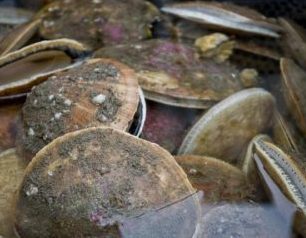
New Research Supports Opening of Currently Closed Scallop Areas
Data presented to the New England Fishery Management Council last month provide the latest evidence that long-closed areas of the Northwest Atlantic can be sustainably opened to the scallop fishery. The Fisheries Survival Fund, which represents the vast majority of full-time Atlantic Sea scallop fishermen, has long believed that these areas can be safely opened, and supports efforts to do so in light of this new evidence. The Northern Edge of Georges Bank (more formally known as Closed Area II Habitat Area of Particular Concern), has been closed to all commercial fishing activity since 1994. >click to read< 10:00

Ocean Industrialization: Fishing regulators fear wind turbines could threaten spawning area for Atlantic cod
It is the largest offshore HAPC designation in the region. Yet a main concern is cod spawning grounds in a smaller region within the designation, just east of Block Island. That area, known as Cox Ledge, overlaps with some 250 square miles currently leased to developers Ørsted and Eversource for their joint wind energy project: South Fork Wind. It is one of only two offshore wind projects that have completed the federal permitting process. “We are really going about the wind farm development very quickly,” said Kevin Stokesbury, a fisheries science professor at UMass Dartmouth, who studies cod in the Gulf of Maine. “It’s going to be quite a dramatic change to the ecosystem out there.” “We’ve all made sacrifices so cod can recover,” said Capt. Tim Rider, who fishes for groundfish and scallops. “Now they’re going to put a wind farm there,” he said of the cod spawning grounds. “How about they put it somewhere that might not be as intrusive.” >click to read< 11:05

Fishermen reeling as further whale protection measures fast tracked
Maine lobstermen worry that their fate is sealed. Dozens gathered Tuesday evening in the Ellsworth Elementary-Middle School cafeteria for a livestream of a NOAA Fisheries scoping session on modifications to the Atlantic Large Whale Take Reduction Plan. Hundreds more participated online. Spurred by a recent court ruling, federal regulators are fast tracking plans to achieve a 90 percent reduction in entanglement risk. “These are measures that are going to really hurt and there were measures that were put forth that look really bad that didn’t come close to 90 percent, so I want people to realize that this is real, that this is coming and it’s not going to be pretty,” said Kristan Porter, president of the Maine Lobstermen’s Association and an Atlantic Large Whale Take Reduction Team member. >click to read< 10:15

Fishing regulators shoot down scallop leasing plan
In a ballroom overlooking Gloucester Harbor, the council regulating New England’s fisheries rejected a controversial proposal on Tuesday to develop a leasing program in the region’s lucrative scallop fishery after failing to agree on the presented motions. The New England Fishery Management Council deliberated on three motions for more than two hours, with all three failing. The latest leasing push comes 12 years after a proposal to allow it was defeated in a close 9-to-7 council vote, with one member abstaining. New Bedford fishermen and permit owners were at the hotel hours before the council took up the leasing issue. The opposition has been largely centralized in the city, driven by the crew and some vessel owners who fear leasing is the first step toward further consolidation. Photos, >click to read< 07:40



































